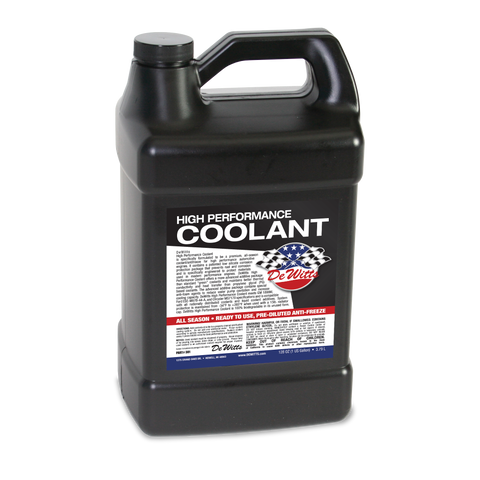Is your radiator a Direct Fit?
Yes! Every DeWitts Aluminum radiator is designed to fit the listed application without any modifications to your car. In fact, we hold the official U.S. trademark for the term Direct Fit®.
How many horsepower will your radiator cool?
Higher horsepower does not always mean a higher heat load. It depends on how you drive the car and the ambient conditions during that time. We have test results on each radiators heat rejection and publish that rating compared to the factory unit. In most cases, our double row radiators are a 30% increase in heat rejection. Adding an electric fan will boost that number an additional 10%.
What pressure cap should I have?
Pressurizing the system raises the boiling point of the coolant 3 degrees for every one pound of pressure. This does not have anything to do with how your cooling system will perform. It only sets the point at which your coolant will boil. A coolant mixture of 50/50 has a boiling point of 238 degrees. Pressurizing the system 15 psi will change that point to 283 degrees but it will not change the coolant running temperature. Pressure caps are available with ratings of 7-20 psi and any cap in that range would work. We recommend something in the 13-15 psi range.
Can I get my radiator with 1 1/4" tubes?
Yes, every model is available with 1 1/4" tubes and this option adds approximately 10% additional cooling. (This is our HP Series) With that said, maybe a better question is "do I need to get 1 1/4" tubes"? A double row core with 1.0" tubes is equal to a five (5) row copper unit and almost double the heat rejection of a single row aluminum unit. So, in most cases the larger tubes are not necessary.
Why do aluminum radiators cool better than copper units?
Copper has better thermal conductive properties than aluminum and that is why many people ask this question. The fact is, older copper radiators are made up of (4) four different materials, not just copper. The copper tubes are bonded to the fin with solder (lead) and that has very poor conductive properties. The tanks are made of brass and the side channels are steel. An aluminum radiator is 100% aluminum and the tubes are much wider and closer together (shorter fin height) than the older copper units. As a result, you have more tube-to-fin contact and that is what removes heat.
Will painting the radiator reduce the efficiency?
Unless you are dip coating, the simple answer is no. When you paint a radiator most of the paint is applied to the end tanks and side channels and very little will stick to the core face. DeWitts Black Ice is a product specifically designed to adhere to aluminum without any reduction in heat transfer. This is a special two part epoxy paint that is chemically hardened and it shrinks as it cures to a thickness of .001". Every DeWitts Aluminum Radiator is available with a Black Ice coat as an option.
Why are my electric fans not running?
When you purchase a DeWitts Radiator & Fan Combination, we install the temperature switch (195on/175off) into the radiator inlet tank. When the temperature hits 195, this switch contact closes and the fans will come on. In order for this to function correctly, the radiator much be properly grounded. A ground strap is provided on each package and the installer must connect this wire to a good chassis ground or the fans will not function. If your fans were operating and then stopped working, a good test is to remove the wire from the switch and touch it to a good ground. If the fans come on, then the problem is likely the switch. If the fans do not come on, then check the main fuse for each fan.
What coolant do you recommend?
Actually the quality of the water you use is more important than the brand of coolant. Aluminum is very sensitive to minerals and chemicals in all sources of water, and only distilled water should be used. We recommend that you purchase a "pre-mixed" extended life coolant of your choice. This eliminates any chance of using the wrong source of water and simplifies the process of mixing, filling, and adding coolant.



